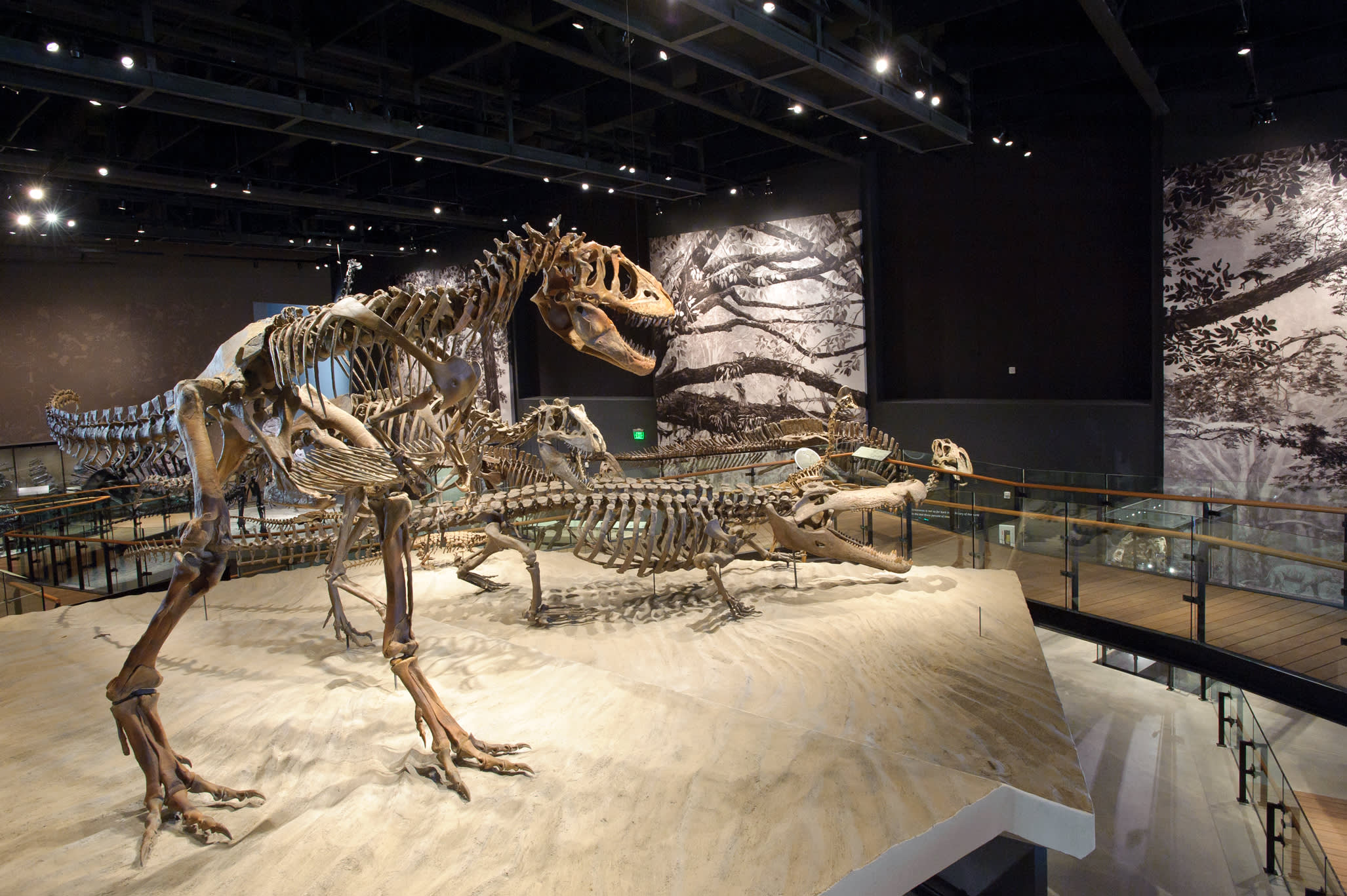
3 Reasons You Should Visit the Natural History Museum of Utah
3 Reasons Why Your Utah Vacation Isn’t Complete Without A Stop at the Natural History Museum of Utah
It’s hard to feel bad for museums. They (mostly) unfairly get a bad rap for being too quiet and too boring. You deserve to know the truth about the Natural History Museum of Utah. It’s the antithesis to nerdy...we’ll call it educationally chic. Here are three reasons why you should shrug off the stereotypes and spend time at this museum of land/sky/life.
3. The Building and Location
Natural History Museum of Utah, in Salt Lake City, Utah. Stuart Ruckman/NHMU
Just driving to the museum is worth your time (but you should still go inside). The Rio Tinto Center is an architecture buff’s dream. Nestled against Salt Lake’s Wasatch Mountains, the building resides on several terraces that blend into the surrounding environment. The building is known for its 42,000 square feet of standing seam copper weaves its way around the exterior. The copper, mined from Kennecott Utah Copper's Bingham Canyon Mine was installed in such a way that it emulates the layered rock formations Utah is famous for.
What’s even cooler is that the building has achieved the LEED Gold Certification for sustainability. A natural history museum doesn’t get any more natural than this.
The building is located at the junction of several mountain trails, including the popular Bonneville Shoreline Trail. So you can get in your mountain bike ride or trail run before or after your experience inside the museum. They have drinking fountains to keep you hydrated and a cafe that offers lunch and snacks between 9am and 4pm.
2. Permanent Exhibits
The Natural History Museum of Utah has meticulously crafted several exhibits that provide an interactive educational experience for kids and adults. Our three favorites:
Past Worlds
Natural History Museum of Utah, in Salt Lake City, Utah.
This exhibit displays encapsulates the sights, sounds and smells (really) of both animal and plant life from ancient ecosystems. You can be a paleontologist for a day and participate in a dinosaur dig and checking out the dozens of dinosaur skeletal reconstructions. See history from millions of years ago in the matter of minutes.
Great Salt Lake
Natural History Museum of Utah, in Salt Lake City, Utah. Tom Smart/NHMU
If the Wonder of the World Committee (is that a thing?) were to name an 8th wonder of the world, it’d have to be the Great Salt Lake. C’mon, a giant lake full of salt water in the middle of the desert? In this exhibit, your questions will be answered as you learn about the Great Salt Lake’s origin and current inhabitants.
Land
Natural History Museum of Utah, in Salt Lake City, Utah. Tom Smart/NHMU
We believe that Mother Nature played favorites with Utah. In this fascinating exhibit learn about Utah’s mountains, plateaus and unearthly rock formations. See how they were formed as you explore interactive exhibits on erosion and plate tectonics –– then prepare to plan your trip to one of Utah’s five national parks to see for yourself.
1. Special Exhibits
Each year, the Natural History Museum of Utah plans special exhibits focused on everything from animal life to chocolate (yes, chocolate). Here are a few examples of special exhibits that have been available to the public. Check their website to see what the current special exhibit is.
Nature's Ultimate Machines (2018)
Focused on the marvels of natural engineering, helping you imagine a jaw that could crush 8,000 pounds in one bite (that’s a lot of French fries), a punch that could break through aquarium glass (eat your heart out, Karate Kid), or ears that act as air conditioners (say what?)
Chocolate (2014)
This exhibit highlighted the origin of chocolate, its history and culture. Did you know that Utah is home to America’s earliest known chocolate? Beats our other claim to fame –– the world’s first KFC.
Vikings (2017)
Who hasn’t wanted to see a 1,000-year-old piece of Viking bread or touch a hair from a real Viking beard? These were just two of the more than 500 artifacts brought to Utah from Scandanavia.